As the weather starts to cool off, it’s time to get your hands a little dirty and plant lily bulbs in the fall. The rewards are well worth the effort!
Lilies are excellent, easy-to-grow perennial flowers that come in so many different varieties and styles. You put in a bit of work planting the bulbs in the fall – and get an incredible payback of colorful blooms when spring and summer finally roll around again.
Whether you are an experienced gardener or are just starting out, lilies are a great option for fall planting. They can grow in most locations in the United States but are hardy in growing zones three though nine..
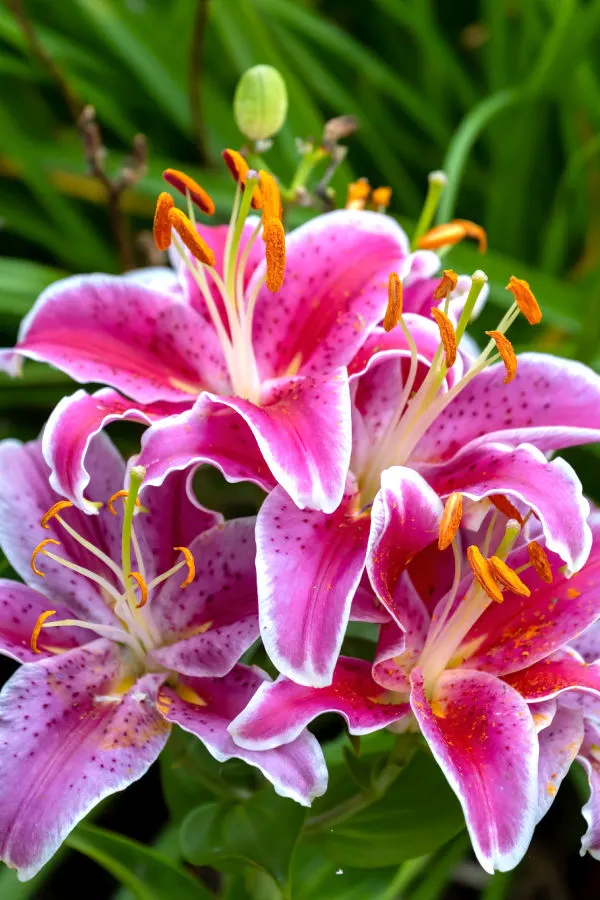
While you can plant lilies in the spring, doing so in the fall gives them a head start at a stronger and better blooming season the following year. It’s also easy to do in conjunction with clearing out your garden and flowerbeds from a long summer of growing.
Read on to find out exactly how to plant and care for these beautiful bloomers. There are also 5 unique and beautiful varieties that you might want to consider including in your flowerbeds this fall at the end of the article.
Heads Up About “True” Lilies
While there are many different plants that have the words “lily” or “lilies” in their title, several of them aren’t true lilies. True lilies are grown from bulbs and are from the genus Lilium.
Some examples of non-true lilies would be daylilies, peace lilies, water lilies, calla lilies, and lily-of-the-valley. Keep this in mind when going to purchase bulb lilies.
How To Plant Lily bulbs In The Fall
There are so many different lily varieties available. Each one features different bloom colors as well as the timing of when the blooms appear.
Some bulb lily varieties do better when planted in the spring as opposed to the fall, so be sure to check out your specific variety before purchasing. However, the advantages of planting lily bulbs in the fall are high.
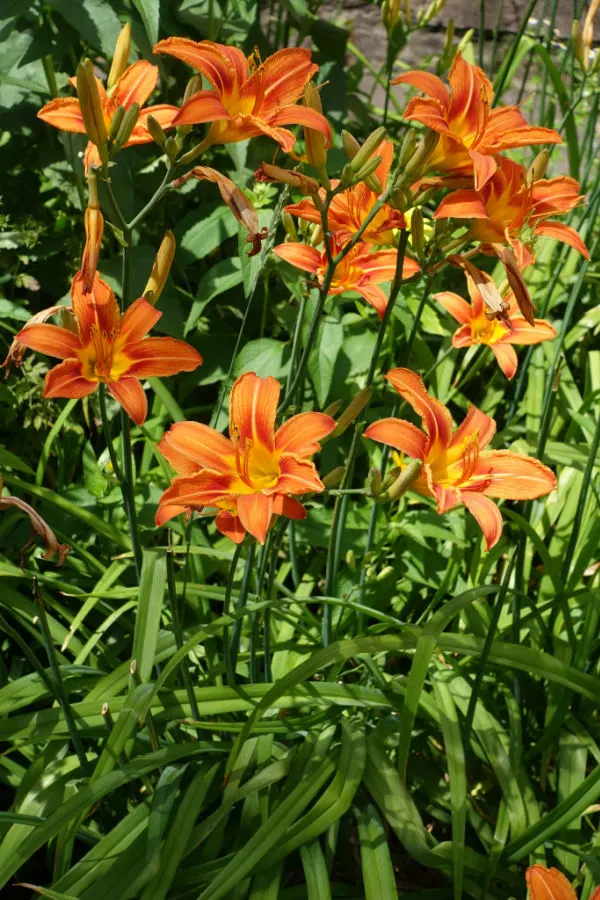
Lilies actually benefit from the colder winter months. Temperatures below 35º Fahrenheit for 8 to 10 weeks will help the plants store energy to emerge in the spring strong and able to put on those beautiful blooms. Without these colder temps, lilies might be weaker and less likely to bloom.
With a little pre-planning in the fall and by planting different varieties of lilies, you can enjoy continual blooms for weeks during the summer months.
Soil & Sun Requirements
You want to choose a location that receives 6 to 8 hours of direct sunlight each day. If the growing location has too much shade, the plants are likely to become leggy and the plants will struggle to set blooms. However, some varieties can handle partial shade.
Be sure that the planting location also has soil that is well-draining. You can always amend heavy soils with compost to help increase drainage and improve the nutrients in the soil as well. Most bulb lily varieties will grow well in neutral to slightly acidic soils.
Why Plant Bulb Lilies In The Fall?
Timing is everything when it comes to planting lilies in the fall. If you plant too soon and the soil temperatures are still warm, the plants will not be able to thrive. Wait too late and the bulbs won’t be able to get established prior to the ground freezing.
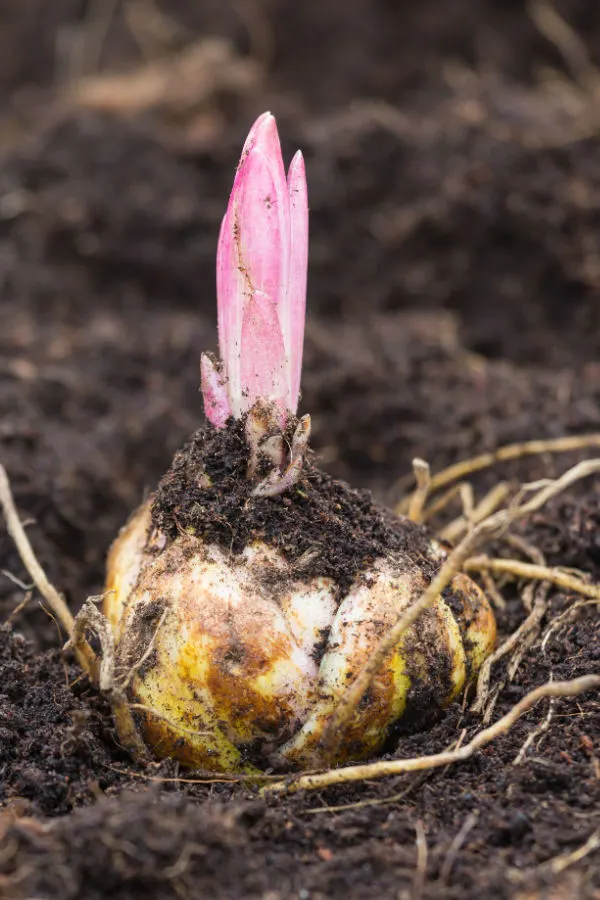
For best results and in most locations, wait until late September through early November for planting bulbs. Be sure to check out your First Frost Date for your specific location and aim for getting bulbs in the ground about four weeks before this date.
Wait to purchase your bulbs until close to when you are planning to plant since the bulbs do not actually go dormant. The sooner you can get them into the ground after purchasing, the better.
Worried about keeping your newly planted bulbs safe from little four-legged critters? Be sure to check out, “How To Keep Fall Bulbs Safe From Squirrels, Mics & Other Rodents.”
Planting The Bulbs
In your planting location, loosen the soil about a foot deep. This will help to allow the bulb to take root easier. Amend the soil with compost if needed.
Plant the bulb deep at about three times the length of the bulb. So if your lily bulb measures 2 inches, you should plant it 6 inches deep. The bulbs should be at least 4 to 6 inches below the soil’s surface for the best winter protection.
Always place the bulb with the pointy end up. Backfill with soil, lightly tamp down, and water the planting area well.
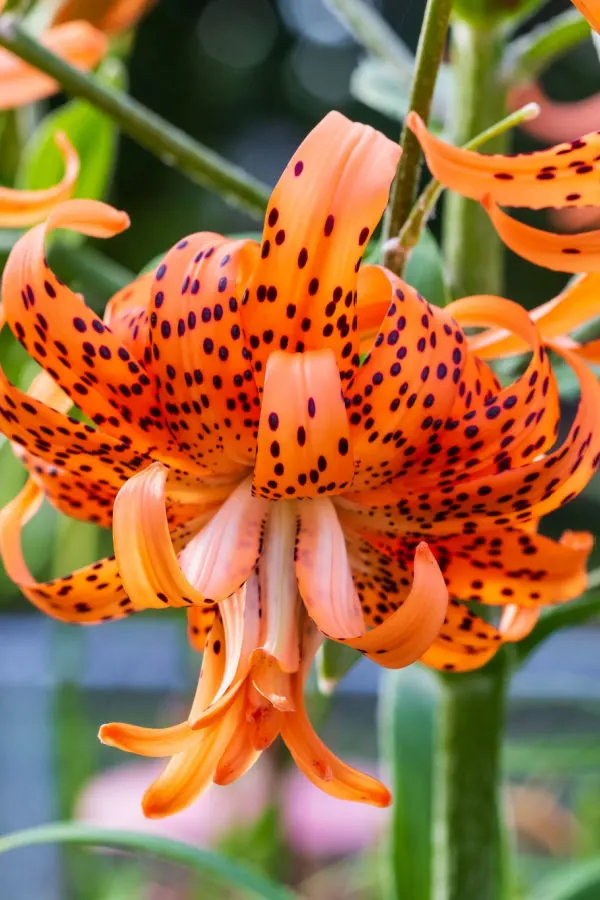
The spacing for additional bulbs is based on the width of each bulb. Space them around 3 times the width apart. This spacing will also vary depending on which variety you are growing.
Simple Fall Care
Lily bulbs will need about an inch of rainfall or hand watering each week. Continue watering until the soil freezes.
Adding a few inches of mulch will help to retain moisture and it also provides extra insulation to the newly established roots. Use about 4 to 6 inches of straw, wood chips, grass clippings, or other natural mulches for the best results.
Other than that, you get to sit back and relax while you wait for your beautiful lily bulbs to appear in the springtime! If you are lost on which type of lily variety to grow, check out the below unique and beloved options.
5 Unique Lily Bulbs To Try
While lilies come in many different varieties, the following 5 varieties will add stunning color and textures to your flowerbeds or growing areas. The times that they bloom vary, so by incorporating a few different varieties, you can enjoy stunning blooms for several weeks during the summer months.
Apricot Fudge
The Apricot Fudge Lily grows to be around 24 to 36 inches tall and will reward you with stunning, double-petaled yellow/peach blooms. These blooms look more like roses as opposed to traditional lilies for a unique addition to any garden space.
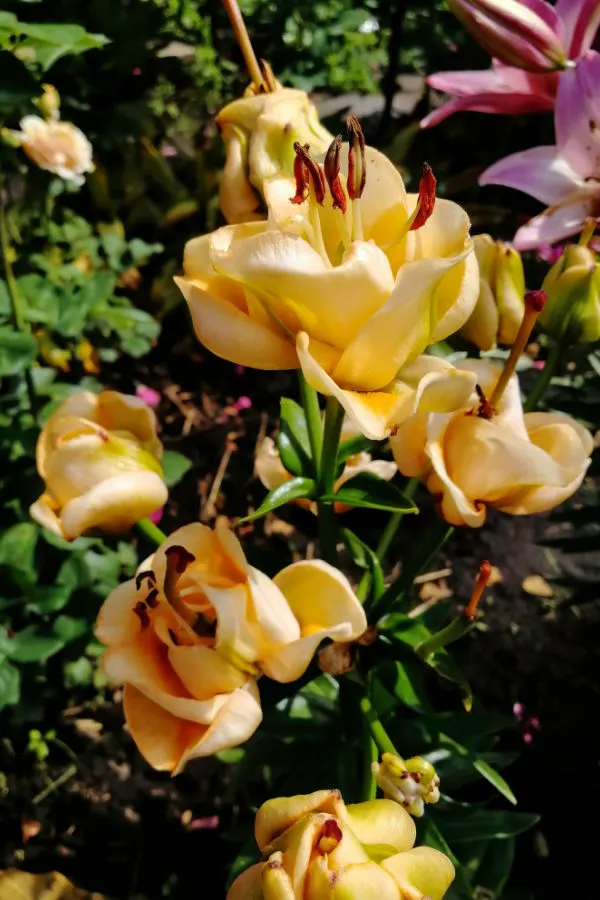
The Apricot Fudge Lily’s blooms appear in early to mid-summer and can measure up to three inches across. They can thrive in full sun or partial shade and they are perfect for attracting butterflies to your property.
Asiatic Lily Mix
The Asiatic Lily Mix variety of bulbs produce blooms in yellow, red, and cream. These blooms appear in early to mid-summer. They are a staple in many gardens for their timeless beauty and colors.
They also vary slightly in height, adding visual interest to flowerbeds and gardens of all sizes. Known to multiply after a few years, they are perfect for establishing a dedicated lily patch on your property.
Stargazer
Bright pink and red blooms with white edges make the Stargazer Lily a beauty for sure! They are an easy lily variety to grow and maintain, with little care needed after becoming established. Their blooms appear in mid to late summer and are long-lasting.
The Stargazer Lily blooms are also one of the most fragrant of all lilies, having a slightly spicy smell. Their blooms also make excellent cut flowers as well that can last two or more weeks. This variety grows to be around 24 to 36 inches tall.
Martagon Mix
The Martagon Lily Mix the perfect lily mix when you are wanting a variety of fragrant, smaller blooms that blend in well with other more natural plants around your property. They have the same look as traditional lily blooms but in a tinier package. Their blooms appear in mid to late summer and can vary in color from reds, oranges, pinks, yellows, and/or whites.
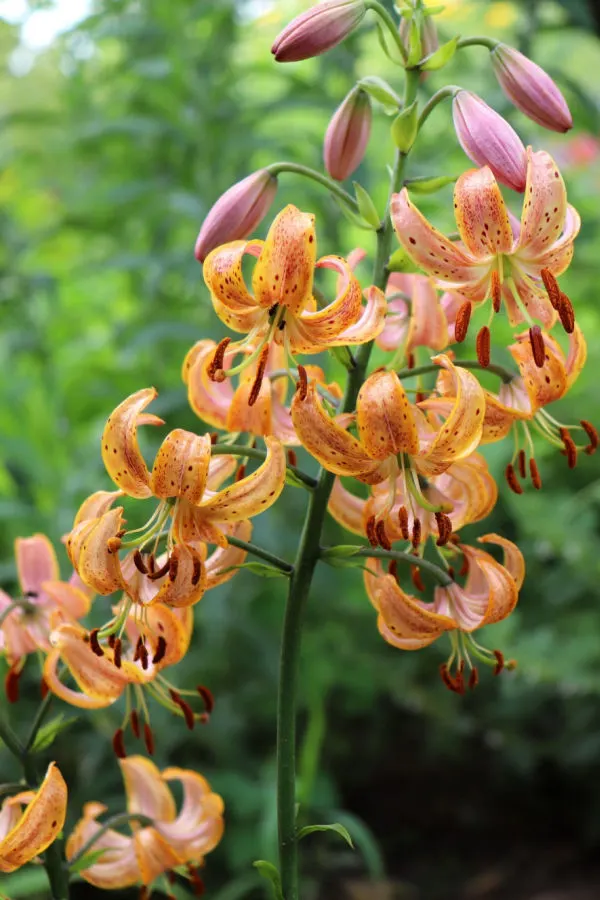
The Martagon Mix Lilies do best when they are planted in partial sun. While they might take a bit longer to multiply, they will stand around 72 inches tall by the second year.
Double Tiger Lily
Last but especially not least is the Double Tiger Lily. This lily is a beauty that typically reaches around 36 to 48 inches tall, but some may grow to be around 6 to 7 feet tall.
Because of its tall height, it can produce as many as 25 blooms per stem, making it one of the more prolific lilies available. Those blooms arrive in early to mid-summer and are orange in color with a freckling of black dots. The Double Tiger Lily is perfect for creating stunning backdrops in wind-protected areas of your property.
Follow Our Facebook Page For Even More Great Tips! Simple Garden Life Facebook Page
Simple Garden Life is a website dedicated to keeping gardening fun, simple and enjoyable! We publish two new articles each week along with a new garden podcast episode every two weeks. This article may contain affiliate links.
